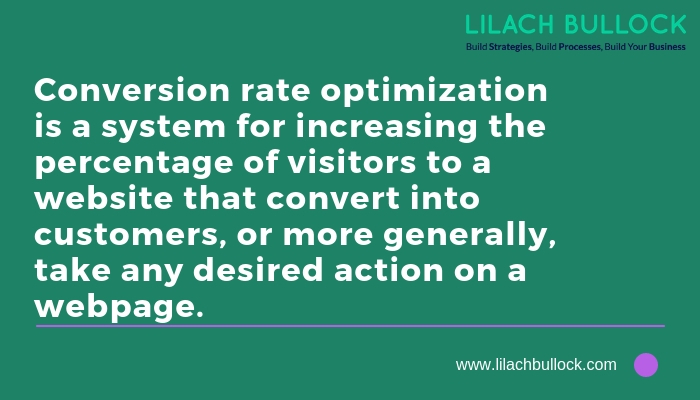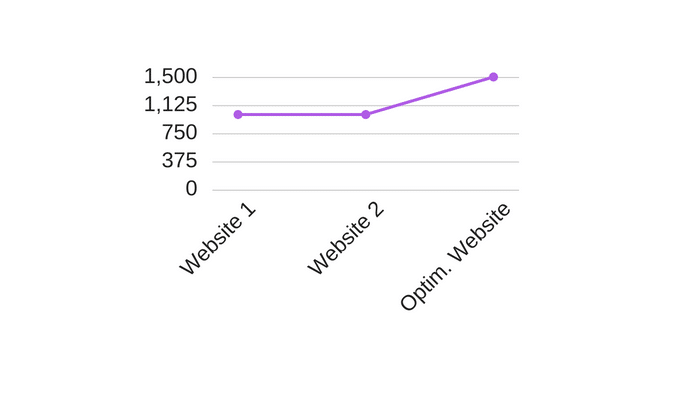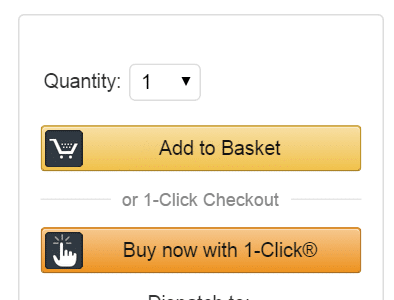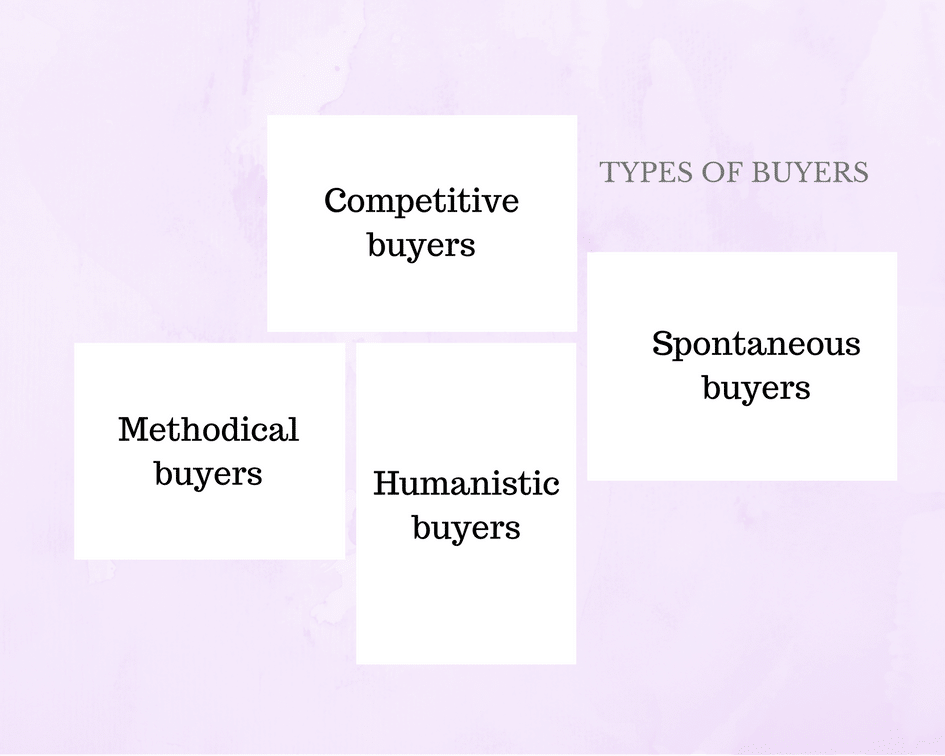Follow Lilach
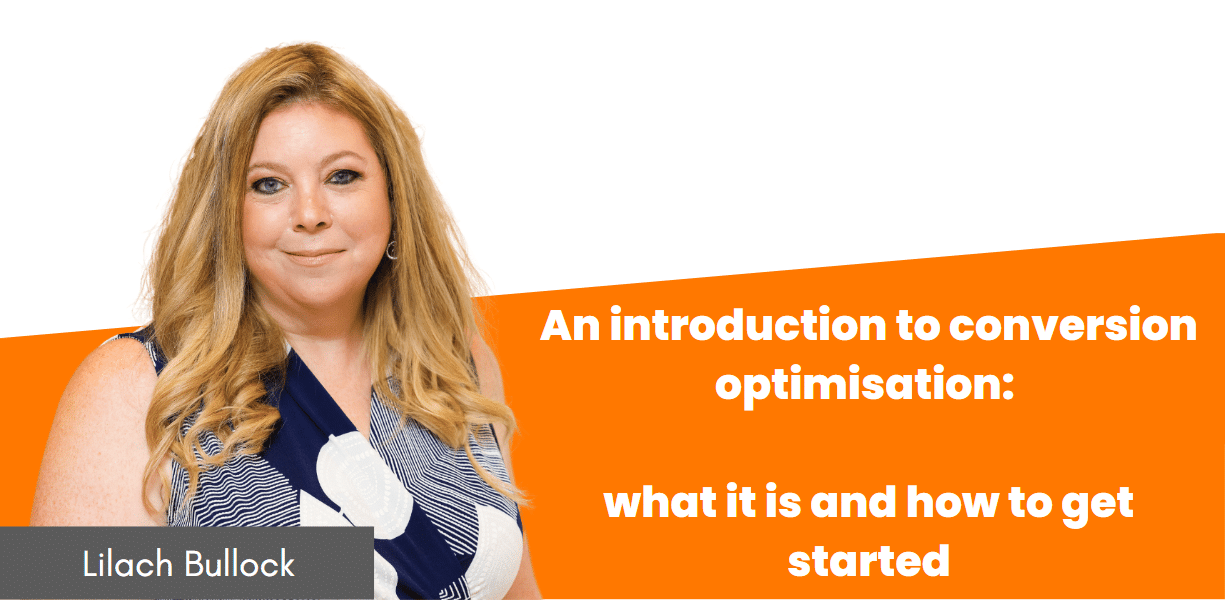
An introduction to conversion optimisation: what it is and how to get started
How can you get better results for your business online? In many cases, the answer is quite simple: conversion optimization.
You don’t need more traffic, or more offers, but rather, you need to create a better-optimised website for your visitors that drives conversions. No matter how small or big your business is, all types of businesses can benefit from optimising their websites.
In this blog post, I’m going to give you an introduction to conversion optimization so that you know what it is and how you can get started with optimising your own website.
What is conversion optimisation?
For a simple, clear way of defining conversion optimization, we can use the Wikipedia definition:
“A system for increasing the percentage of visitors to a website that convert into customers, or more generally, take any desired action on a webpage. It is commonly referred to as CRO.”
What this means is that by optimizing your website, you are increasing your chances of making more conversions for whatever desired action – it can be buying a product, reading a particular article, downloading a file and so on.
As an example, consider two websites, that, at the start, appear identical in every way. They have the same web copy, they get the same amount of traffic and they have the exact same conversion rate, say for example at 2%. This means that 2% of your website visitors are taking the action you want them to.
Now, one of the two websites will start implementing conversion optimisation techniques. Both of them continue to get the same amount of traffic, so there is no extra investment in promotion. The big difference between the two now, is that the optimised one will see an increase in conversions, let’s say for example, by 1%.
This might not sound like much at first glance, but it’s actually a huge improvement on your numbers.
If you’ve been averaging 2% conversions on your website and have now increased that to 3%, that means you’re effectively making 50% more conversions than you used to – which makes a big difference to your bottom line.
What’s interesting about conversion optimization is that it’s not necessarily about making big changes to your websites, like maybe changing the whole design or all of the copy; rather, it’s more about making many small incremental changes over an extended period of time that can then lead to a substantial increase in your overall revenue.
The changes can be as simple as changing the wording on your call to action or replacing an image, or even just something as small as font size can make a difference.
Conversion optimization is not a one-off process though, but more of continuous, on-going operation.
Over time, you make small changes to figure out which work and which don’t – some might even have a negative impact on your conversion rate, but there’s no need to panic as you can easily revert them and try something else. Conversion rate optimisation is very much a trial and error process so that you can find out what exactly works best for you, and what doesn’t work.
[clickToTweet tweet=”An introduction to #conversion optimisation via @lilachbullock #leads” quote=”An introduction to #conversion optimisation via @lilachbullock #leads”]
Conversion optimization vs. more traffic
You might now think, wouldn’t it be easier to just invest in getting more traffic to your website, rather than working on conversion optimization? You could simply invest in more advertising and improve your conversions that way.
Sure, more traffic is always great; but what makes conversion optimization even better is that it’s more of a long-term solution. Conversion Rate Optimization works better, it helps you create a better website for your audience and one that will ultimately produce more results for your business.
By performing conversion optimization, you are also improving the quality of your business and creating a website that your audience can appreciate and that they leave with a favourable impression.
Conversion Rate Optimization is also less expensive than having to constantly pay for more ads in order to get more traffic. Not to mention, the more pleased customers and visitors you have, the more your traffic will grow organically, simply because your business is growing and you are increasing its overall market share.
The principles of conversion optimization
In order to be successful in your business, you need to focus on three different things:
- Focus on improving your overall product
- Focus on improving your marketing
- Focus on giving your customers the best possible experience
[clickToTweet tweet=”The principles of #conversion optimisation via @lilachbullock #leads” quote=”The principles of #conversion optimisation via @lilachbullock #leads”]
The key terms to remember here are customer focus and continuous improvement – this is what will help you get to the top, as well as stay there.
Continuous improvement: Amazon, a case study
When it comes to the online shopping world, there’s no one else that knows as well as Amazon the importance of focusing on the customer and of continuous improvement. And this shows in their results, as they are at the top of the online shopping market.
Amazon has always focused on the customer and strived to create the best possible experience for them: from personalized emails with recommendations to super-fast, next day shipping, Amazon know what their customers need and want and are giving it to them.
When it comes to their website, though, their thinking is the same: continuous improvement is essential for success.
You might be tempted to think that after years and years of being one of the top online retailers they would’ve sorted the best possible design for their website, but they are actually still running over 200 tests at any given time on their websites and constantly looking for ways of improving them.
As Jeff Bezos, Amazon founder and CEO, as well as one of the top marketers of our time said:
“If you double the number of experiments you do per year you’re going to double your inventiveness…what’s dangerous is not to evolve. My view is there’s no bad time to innovate.”
One of the areas that have seen a lot of experimentation on the Amazon website is the “add to cart” button. In the late 90’s it used to say “you can always remove it later” and also included words like “safe” and “guaranteed”; this was necessary as we lived in a different world then.
Online shopping was still quite a new and novel experience for most so businesses needed to find ways of reassuring their visitors so that they would feel safe to buy from them.
As we got more comfortable with online shopping, as well as with Amazon, they started to focus on making the buying process as easy as possible for the customer – which led to the Amazon one-click that we know and love.
The changes and experiments you make can start small, from simply changing a colour on your website, or they could be much bigger, like adding a new product to your line – whatever it is, keep your customer in mind, and don’t underestimate the power of even the smallest of changes.
Another thing that Amazon has done very well is they were capable of recognizing an opportunity for more revenue, even if it could drop their conversion rate a bit. So they introduced Amazon Marketplace – no stock, no ads, all they have to do is basically just collect the percentage of sales they are owed. Amazon show us that it’s all about finding the right balance between increasing your conversion rate and your revenue and what the best mix of the two is.
How to make use of your resources for conversion optimization
Another important aspect of website conversion optimisation is how you balance your resources – meaning, what you have available to help you in your conversion optimisation efforts:
- Resources: what exactly do you have that you can use as you work on conversion optimisation? Instead of focusing on what you don’t have, try to focus on what you do have available to help – and use it.
- People: once you identify the changes you want to make, you’re going to need people to help you make those changes: from designers to copywriters and technical people, they all play a very important part in the conversion optimisation process
- Culture: what is the culture surrounding your business like?
[clickToTweet tweet=”Making use of your resources for #conversion optimisation via @lilachbullock #leads” quote=”Making use of your resources for #conversion optimisation via @lilachbullock #leads”]
Instead of focusing on getting more traffic, as most of us are tempted to do, try using your resources towards creating better user experiences. At the end of the day, not only is it more profitable for the business in the long run, as we discussed a bit earlier, but it is also much less costly, as you won’t need as many resources for conversion optimisation as you would for getting more traffic to your website, constantly.
In fact, you could even say that most websites don’t really have a traffic problem. They actually need to work on improving their conversion rates and on improving the visitors’ experience and this can massively impact their success, even doubling their sales.
If you’re planning on starting a coherent conversion optimisation strategy, you will need to consider these three specific areas:
- Marketing
- Graphic design, copywriting, creative resources and
- Technical
Then, you will need to find someone within your business that will take ownership of the conversion optimisation project and who will push it forward in all of these areas. It doesn’t matter how small or big your company is – website conversion is vital regardless of the size of your business.
One of the biggest issues with strategies is that they always somehow become the absolute responsibility of a single person (or in the case of bigger companies, a department), in effect making it so people end up working individually, rather than as a team, in order to achieve to companies’ common goals. But if you want conversion optimisation to work, then you will need to find a way to get everyone in your company on board and even shift your company culture, if necessary.
Try to get all of the different relevant people involved and make sure they are all aware of where this process is leading and what the ultimate goal is. That might not even be necessary if you have a small business with few employees, but not matter how small or big, make sure everyone is made aware of your goals. Then, give them the tools needed to communicate between them, so that they collaborate towards achieving the ultimate goal.
As much as you might need the resources, you will need the process even more:
- Plan
- Measure
- Improve
- Repeat
[clickToTweet tweet=”The #conversion optimisation process via @lilachbullock #leads” quote=”The #conversion optimisation process via @lilachbullock #leads”]
What are the customer goals?
Why are people visiting your website? There’s likely a variety of reasons why people come to your website, but one thing they have in common is that they are at least on some level, however small, interested in you or your brand; otherwise, they would probably be visiting a different website.
Once they reach your website though, it becomes your job to persuade them to buy from you. This is where the persuasion process comes in – the process you go through to persuade someone to actually buy from you.
There are three parts to this process – or, better said, three questions you need to answer:
- Who are you trying to persuade? How much do you know about your website visitors and target audience? Ultimately, the more you know about them, the better you can sell to them. Knowing what they like, what their interests are, what their dislikes are, and so on, can help you improve your overall product, your marketing, but also your website. For example, you can adapt your sales page or landing page so that it answers all of the questions your website visitors might have about your product.
- What action do you want them to take? You have to be very clear on what actions you want your website visitors to take. It can be as simple as clicking on a specific link, or subscribing to your list, or it can be downloading a specific file or buying a certain product. You need to be aware of all types of actions, big and small, that you want your visitors to take, so that you can set a clearly defined path for them to follow. If you want your visitors to buy something from you, then you need to not only make it easy for them to get to that page, but also help them get there as quickly as possible.
- What action do they want to take? Now that you know what actions you want your website visitors to take, the question is – what action do they want to take? At the end of the day, they are in control of the experience they have on your website, although you can occasionally steer them towards the actions you want them to take. But it’s also important to remember that, in many cases, website visitors come to a specific website on purpose – meaning, they have an end goal in mind. Now, ask yourself, what is that goal? Once you identify all of the different actions your website visitors want to take, as well as what their goals are, try to help them towards achieving that goal or towards completing that action. It might not be the exact action you wanted them to take, but it will help you as well as they will be satisfied customers, so at least one of your goals will also be achieved.
[clickToTweet tweet=”Customer goals and #conversion optimisation via @lilachbullock #leads” quote=”Customer goals and #conversion optimisation via @lilachbullock #leads”]
The science of personalization
One of the most important things to know about humans is that, well, we’re all different. Some are more logical, while others are more emotional in the ways they respond to different situations, as well as in the ways we gather and process information. Another way in which we are different is that some of us are more methodical while others, more spontaneous.
This is very important to conversion optimisation. For example, studies have shown that there are four unique patterns of eye tracking on websites:
- Competitive people: people who are more competitive tend to focus their gaze on the top of the page.
- Methodical people: those who are more methodical will likely to look at all the different data points on the page and even study the page navigation so that they know as much as possible.
- Spontaneous people: spontaneous people are more likely to be attracted to interaction – images, videos, etc. will attract their attention much more than just text
- Humanistic people: those who are the more humanistic type, are a bit more deliberate in the way they peruse a web page and they are also more likely to get emotionally involved with the page.
It’s important to know about all of the different types of people that could be visiting your website as each one will be approaching your website differently, as well as seen things differently. You will also need to identify what each of these different types of website visitors are looking to achieve on your website and what it is they want.
Website visitors can be segmented into other relevant groups, as well. For example:
- Those who know about your business
- Those who don’t know about your business/website
Or:
- Returning buyers
- New customers
[clickToTweet tweet=”The science of personalisation for #conversion optimisation via @lilachbullock #leads” quote=”The science of personalisation for #conversion optimisation via @lilachbullock #leads”]
All of these different segmentations help us group visitors, which helps with conversion optimisation as each group has different expectations from your business. The more you know about these expectations, the better you can optimise your website.
Another important thing to consider is where your visitors are coming from and how they’ve reached your website. It could be social media, Google or advertising, but what matters is that their expectations are likely to change depending on where they’re coming from.
How you segment your website visitors is completely up to you. It can be as simple or as complex as you wish, but what is important to remember is that it’s there to help you better optimise your website, so that, ultimately, you can make more sales.
Conclusion: an introduction to conversion optimization
Conversion optimization offers one of the most effective ways of basically doubling the sales you make on your website. Instead of focusing on getting more traffic which usually also means investing more money, try to focus on continuously improving your website and the customer experience by making one small change at a time. It’s not about making a single push, but rather of creating a new way of life for your business, where you’re continuously improving it and one that could massively improve your bottom line and even take you to the top of the chain. Stay tuned as over the coming months there will be more guides on how to improve your website conversion rate.
What changes have you made to your website that have made a difference to your conversion rate? Let me know in your comments and please share 🙂

Follow Lilach




